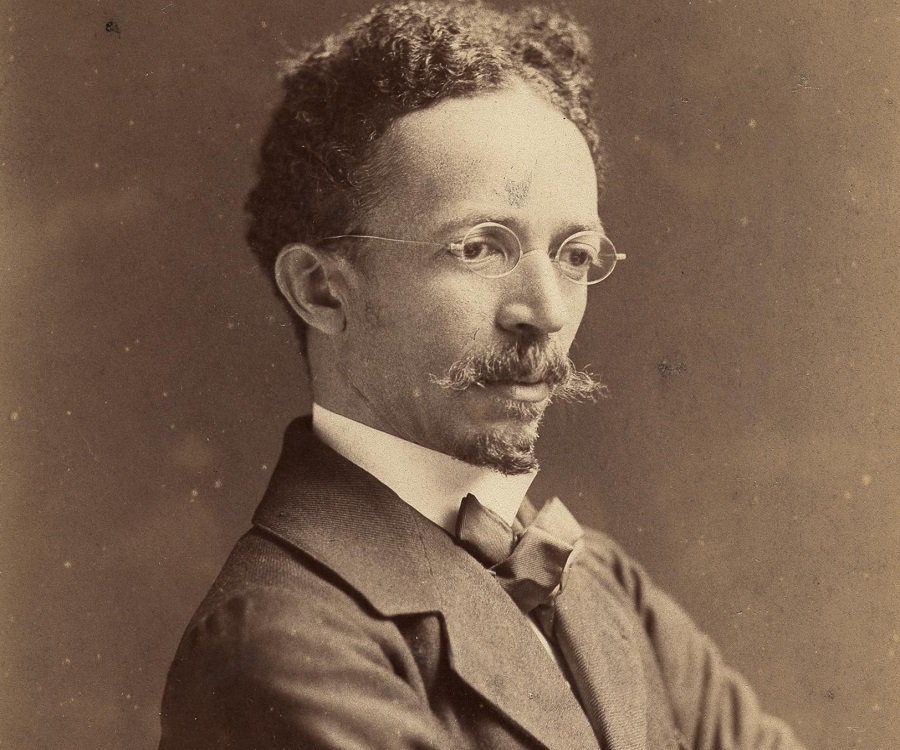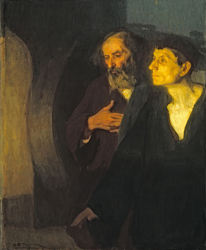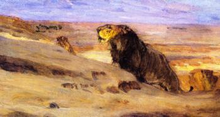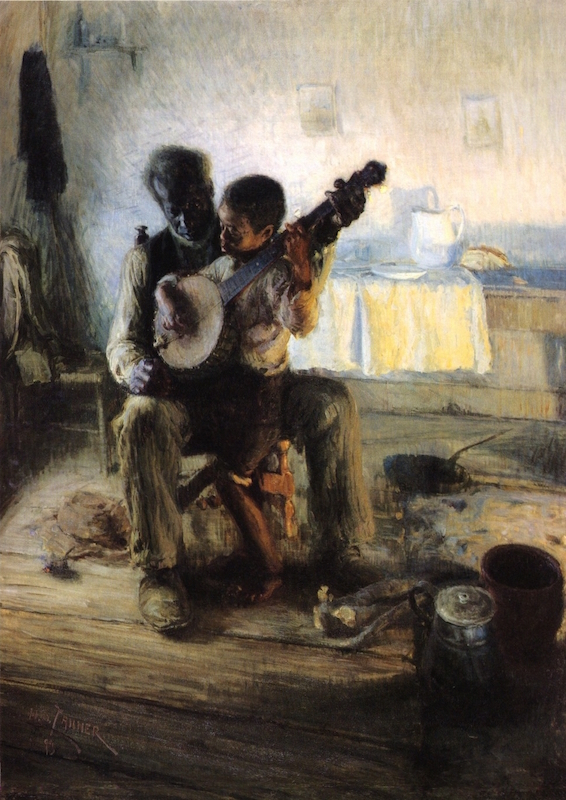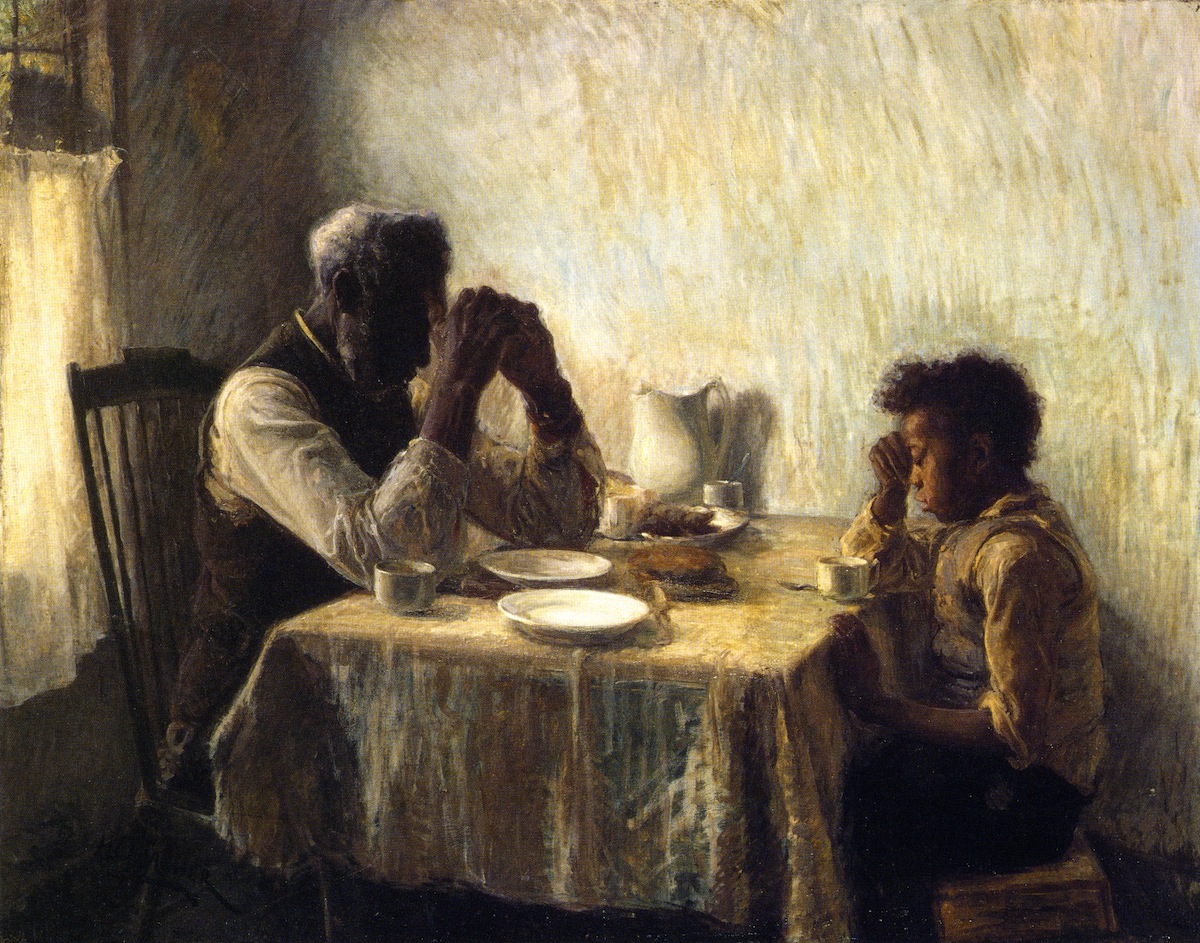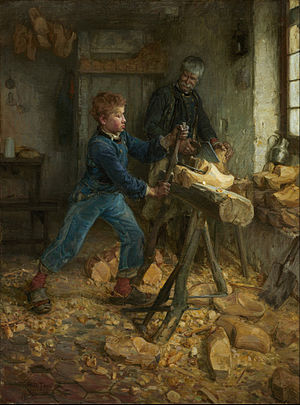- Overview
-
Henry Ossawa Tanner was an American artist and the first African-American painter to gain international acclaim. Tanner moved to Paris, France, in 1891 to study, and continued to live there after being accepted in French artistic circles. His painting entitled Daniel in the Lions' Den was accepted into the 1896 Salon,[3] the official art exhibition of the Académie des Beaux-Arts in Paris.
After his own self-study in art as a young man, Tanner enrolled in 1879 at the Pennsylvania Academy of the Fine Arts in Philadelphia. The only black student, he became a favorite of the painter Thomas Eakins, who had recently begun teaching there. Tanner made other connections among artists, including Robert Henri. In the late 1890s he was sponsored for a trip to Palestine by Rodman Wanamaker, who was impressed by his paintings of biblical themes.
- Career
-
- With the help of Joseph C. Hartzell, a bishop, he exhibited some of his paintings in Cincinnati. In 1891, he went on a tour across Europe with the patronage of that bishop and Mrs. Hartzell.
- In Paris, he attended the Academie Julian, an art school. Colours like blue and blue-green played a dominant role in most of his paintings that he created at that time. He also started using the artistic technique of light and shade during that period.
- In 1893, he came back to the United States to deliver a paper on African Americans and art at the World’s Columbian Exposition in Chicago. In the same year, he created one of his famous works ‘The Banjo Lesson’ while he was in Philadelphia.
- Through this work, he highlighted the role of blacks as entertainers in American culture. In the next year, he created ‘The Thankful Poor’. In this year, he displayed his paintings at the annual Paris salon.
- In 1899, Booker T. Washington, an African-American educator and author published an article on Tanner. The publication of this article played a significant role in securing him an important position in the art industry of America.
- During that time, he displayed his creations through a number of exhibitions in Philadelphia, Boston, New York, Chicago and several art centres of America. ‘Abraham’s Oak’ was his one of the remarkable creations that he drew in 1905.
- In 1918, he skilfully handled the image of sunlight in the painting titled ‘Birthplace of Joan of Arc at Domremy-la-Pucelle’. In 1925, an African-American journal titled “The Crisis” depicted him as a representative of African-American creative persons.
- With the help of Joseph C. Hartzell, a bishop, he exhibited some of his paintings in Cincinnati. In 1891, he went on a tour across Europe with the patronage of that bishop and Mrs. Hartzell.
- Legacy
-
Tanner's work was influential during his career; he has been called "the greatest African American painter to date." The early paintings of William Edouard Scott, who studied with Tanner in France, show the influence of Tanner's technique.
Tanner's Sand Dunes at Sunset, Atlantic City (c. 1885; oil on canvas) hangs in the Green Room at the White House; it is the first painting by an African-American artist to have been purchased for the permanent collection of the White House. The painting is a landscape with a "view across the cool gray of a shadowed beach to dunes made pink by the late afternoon sunlight. A low haze over the water partially hides the sun."
- On View
-
- Los Angeles County Museum of Art
- Morris Museum of Art, Augusta
- New Orleans Museum of Art, New Orleans
- Art Institute of Chicago
- Saint Louis Art Museum, Sait Louis
- Smithsonian American Art Museum, Washington D.C.
- White House, Washington D.C.
- Metropolitan Museum of Art, New York City
- Birmingham Museum of Art
- Museum of Fine Arts, Houston
- Harvey B. Gantt Center, Charlotte

